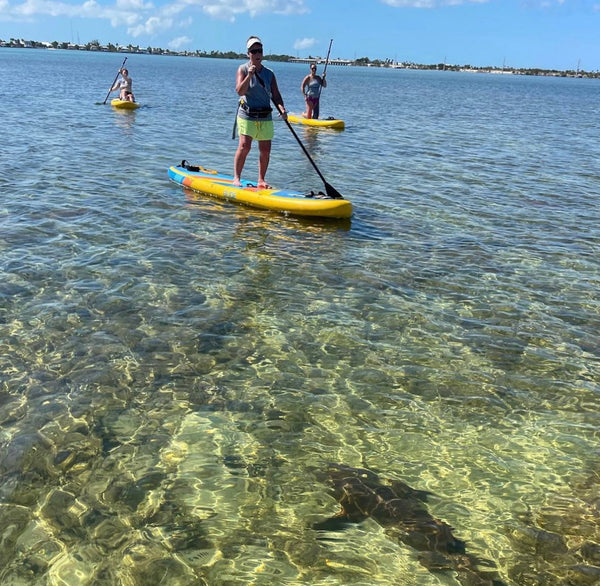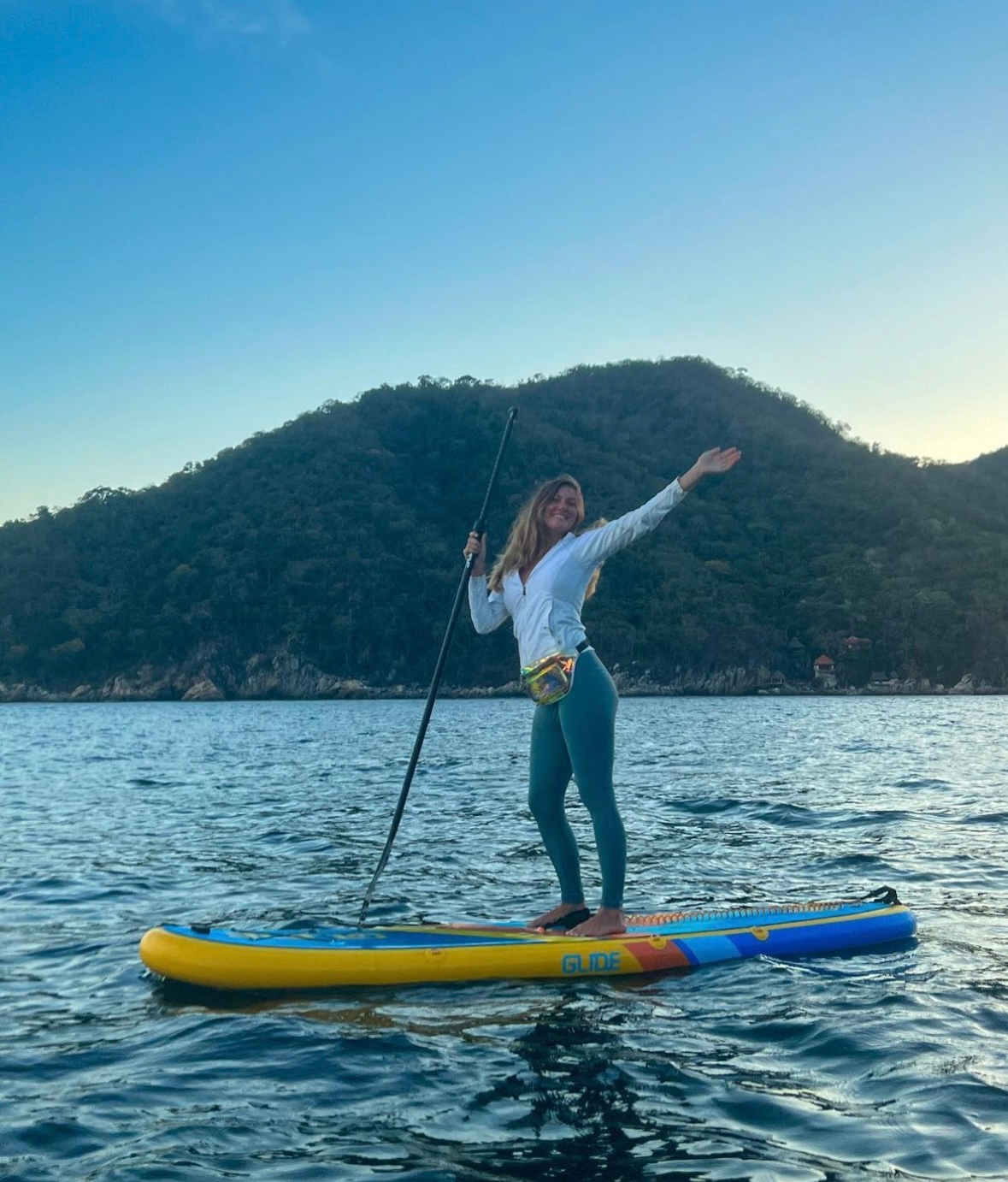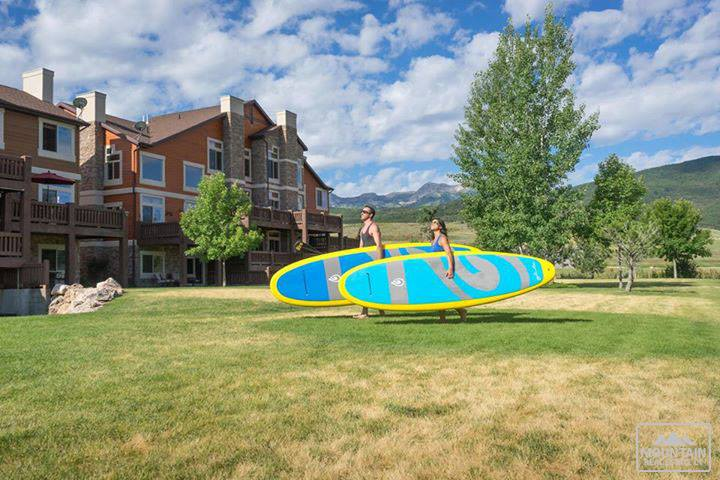
The Role of Weather and Tides in Paddle Boarding: A Comprehensive Guide
Learn how weather and tides impact paddle boarding. From wind and rain to tidal currents, this guide shows you how to SUP safely in all conditions.
Weather and tides are two of the most important factors in paddle boarding. Wind, temperature, rain, and tidal movement can all impact how safe and enjoyable your session will be. This guide explains how to read conditions, plan your route, and adjust your technique for everything from breezy lakes to tidal inlets. You’ll also learn key safety practices, gear tips, and pro strategies so you can paddle with confidence in any environment.
Table of contents
Understanding Weather Conditions
Paddle boarding is one of the best ways to explore lakes, rivers, and coastlines, but the experience can change drastically depending on weather and tides. Calm water with a light breeze can make for a peaceful session, while strong winds or shifting tides can quickly turn paddling into a serious challenge. Understanding these natural forces — and how to adapt to them — is key to staying safe and making the most of every outing.
In this guide, we’ll break down the role of weather and tides in paddle boarding, along with practical tips for reading conditions, adjusting your technique, and planning safer, more enjoyable sessions.
Weather and tides in paddle boarding are extremely important to understand. Comprehending how these factors affect your time on the water and adapting your techniques to accommodate them is essential for a safe and enjoyable outing. By staying informed, planning your route, and using the proper equipment, you can navigate various weather and tidal conditions with confidence.
Understanding Weather Conditions 🌤️
Wind: The Most Important Factor
Wind is the single most influential weather condition in paddle boarding. Even a 5–10 mph breeze can make a huge difference in how hard you’re working.
-
Headwinds (blowing against you) require more effort, shorten your stroke length, and demand extra endurance.
-
Tailwinds (blowing from behind) make paddling easier, but they can also push you farther from shore than planned.
-
Crosswinds (from the side) can cause balance issues, forcing constant course corrections.
Pro tip: Beginners should aim to paddle in winds under 5 mph. More advanced paddlers can handle up to 10–12 mph, but beyond that, it becomes a workout in itself.
Board choice matters: Hard boards cut through wind better due to their lower profile, while inflatables are more likely to get pushed around. If you paddle in windy areas, look for a board with good tracking and a longer waterline.

Temperature: Dress for Success
Both air and water temperature affect your comfort and safety.
-
Cold weather/water: A wetsuit or drysuit helps prevent hypothermia if you fall in. Cold shock is a real danger even for strong swimmers.
-
Warm weather: Quick-dry clothing, rash guards, and plenty of sunscreen keep you protected. Avoid cotton, which stays wet and heavy.
Always check both the air and water temperature before you go. Water that feels refreshing in summer can be dangerous in spring or fall.

Precipitation: Rain, Fog, and Visibility
A light drizzle usually isn’t a problem, but heavy rain or fog creates safety concerns:
-
Reduced visibility makes it harder for boats to see you.
-
Rain combined with wind often makes water choppier.
-
In cold weather, prolonged rain exposure can accelerate hypothermia.
If you paddle in rain, wear bright clothing and consider a waterproof dry bag with extra layers.
Navigating Tides 🌊
Understanding Tidal Movement
Tides are caused by the gravitational pull of the moon and sun, and they dramatically influence coastal paddle boarding. Depending on timing, tides can expose hidden sandbars, create strong tidal currents, or even cut off return routes.
-
Incoming tide (flood): Water flows inland, often helpful for reaching bays or estuaries.
-
Outgoing tide (ebb): Water flows out to sea, sometimes creating strong currents in inlets.
-
Slack tide: The best time for beginners — the period when water movement pauses briefly between incoming and outgoing tides.
Planning Your Route Around Tides
Before launching, check local tide charts (many marinas, apps, or websites provide them). Plan to:
-
Paddle into the tide first, then let the ebbing tide carry you back.
-
Avoid narrow inlets or channels during peak tidal flow if you’re inexperienced.
-
Watch for shifting sandbars and underwater hazards that may only appear at low tide.
Safety in Tidal Waters
Tidal areas often come with extra risks:
-
Stronger currents than most lakes or rivers.
-
Rip currents near beaches — paddle parallel to shore to escape.
-
Boat traffic in channels that coincide with tidal movement.
Always wear a leash and PFD when paddle boarding in tidal zones.
Tips for Paddle Boarding in Different Weather & Tidal Conditions
Windy Conditions
-
Keep a low stance with bent knees for stability.
-
Use short, powerful strokes into headwinds.
-
Angle your board slightly when dealing with crosswinds to maintain a straighter path.
Cold Weather SUP
-
Wear a wetsuit or drysuit and neoprene booties.
-
Paddle with a buddy or share your route plan with someone on shore.
-
Limit time in the water and know the signs of hypothermia.
Warm Weather SUP
-
Apply reef-safe sunscreen regularly.
-
Wear a hat, polarized sunglasses, and UV-protective clothing.
-
Hydrate often — heat exhaustion can sneak up on paddlers.
Strong Tidal Currents
-
Use the tide to your advantage: plan to paddle with the current when possible.
-
Avoid battling fast-moving water beyond your ability.
-
Learn to recognize rip currents — never fight directly against them.
Essential Safety Gear and Precautions 🦺
Personal Flotation Device (PFD)
Non-negotiable. Whether you’re on calm lakes or tidal rivers, a PFD saves lives. Many belt-pack inflatables are designed specifically for paddle boarders.
Leash
Keeps your board within reach if you fall in. In windy or tidal conditions, your SUP can drift faster than you can swim. Always use a leash appropriate for the environment (straight for surf, coiled for flatwater).

Emergency Gear
A whistle, waterproof flashlight, and a phone or VHF radio in a dry bag can make all the difference if conditions change unexpectedly.
Frequently Asked Questions (FAQs)
What’s the best weather for paddle boarding?
Sunny, calm days with winds under 5 mph and air temperatures above 60°F are ideal for most paddlers.
Can you paddle board in the rain?
Yes, but visibility drops and hypothermia risk increases. Stick to sheltered waters and wear proper gear.
Do tides really make paddle boarding harder?
Absolutely. Tidal currents can double or triple the effort needed. Beginners should paddle at slack tide.
Are inflatables or hard boards better in weather changes?
Hard boards track better in wind, but inflatables are more portable. Choose based on your local conditions.
How do I check tides before paddling?
Use NOAA, local marinas, or tide apps. Always factor in how tide changes align with your planned route.

Conclusion: Paddle Smarter, Paddle Safer
Weather and tides aren’t obstacles to paddle boarding — they’re part of the adventure. By learning to read wind forecasts, dress for temperature, prepare for rain, and understand tide cycles, you’ll be able to paddle with confidence in more environments.
Staying informed, carrying the right gear, and respecting nature’s power ensures every session is both safe and rewarding. When you paddle smarter, you not only protect yourself but also open the door to exploring coastlines, rivers, and bays that many paddlers never experience.





